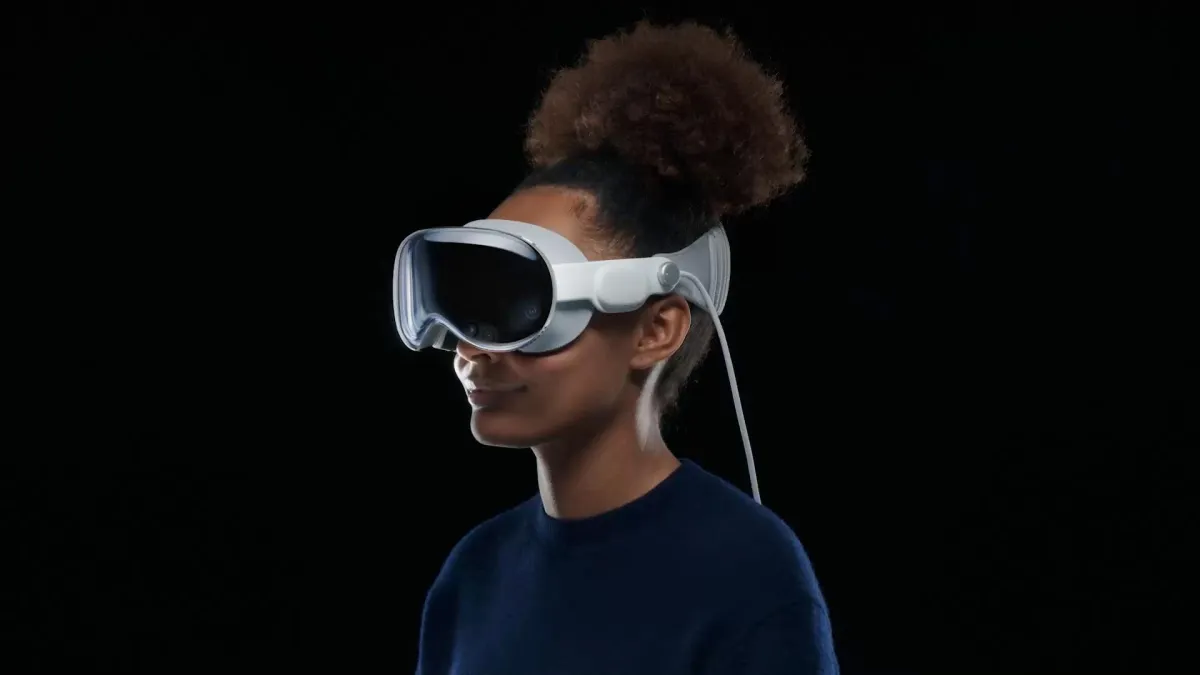
🚀 Apple Vision Pro: Unleashing the Power of Augmented Reality! 🌐
“Innovation distinguishes between a leader and a follower.” - Steve Jobs
I am thrilled to bring you the latest news from the world of technology, and today, I am focusing on a product that has the potential to revolutionize our interaction with the digital world - the Apple Vision Pro.
Apple Vision Pro is Apple's latest venture into Augmented Reality (AR). Unlike Virtual Reality (VR), which creates an entirely artificial environment, AR overlays digital information on an existing environment. This technology is not about replacing our world but enhancing it.
The Apple Vision Pro is a testament to this philosophy. It is a state-of-the-art AR headset that allows users to interact with digital content in the real world. It is designed to augment our perception of the world, offering a seamless blend of digital and physical realities.
The Vision Pro has advanced features such as high-resolution displays, spatial audio technology, and powerful processors that enable it to deliver a truly immersive AR experience. It also boasts a sleek and comfortable design, making it suitable for extended use.
But why AR over VR? The answer lies in the inherent nature of these technologies. VR, while impressive, tends to isolate users from their surroundings. AR, on the other hand, enhances our existing environment by adding layers of digital information. This makes AR more practical and versatile for everyday use.
With AR, we can have real-time navigation aids, interactive learning experiences, enhanced shopping experiences, and more. The possibilities are endless, and with the Apple Vision Pro, these possibilities are now within our reach.
The AR market worldwide is projected to grow by 13.72% from 2023 to 2027, resulting in a market volume of US$52.05 billion in 2027. This growth is a testament to the increasing acceptance and adoption of AR technologies in various sectors.
A notable example of AR's potential is the explosion of Pokémon Go, a game that took the world by storm by overlaying digital creatures onto the real world. It showed us that AR can create engaging and immersive experiences that resonate with a broad audience.
Now, let's explore five ways AR might help various industries and home users:
Education: AR can make learning more interactive and engaging. For example, students can explore the solar system in 3D or walk through historical events, enhancing their understanding and retention of the subject matter.
Healthcare: AR can assist in complex surgical procedures by overlaying crucial information, such as the patient's vitals or a 3D model of the organ being operated on, directly onto the surgeon's field of view.
Retail: AR can enhance the shopping experience by allowing customers to try on clothes and makeup or see how furniture would look in their homes, all virtually. This can lead to increased customer satisfaction and sales.
Real Estate: AR can enhance the real estate experience by allowing potential buyers or renters to visualize how their own furniture and decor would look in a property. This can help them make more informed decisions and feel more confident about their choices.
Home Users: From gaming to home improvement, AR has numerous applications for home users. They can play immersive AR games, visualize a new paint color on their walls, or even get step-by-step cooking instructions overlaid with their ingredients.
AR, represented by devices like the Apple Vision Pro, is the next frontier in computing. It offers a new way to interact with digital content that is more natural and intuitive. It's not about replacing our world but about enriching it.
Stay tuned for more updates on this exciting technology!

